Art World
The Zeitz Museum Debuts in Cape Town to High Hopes and a Swirl of Fierce Debate
A lot of fanfare, and a lot of questions, surround the ambitious new institution.
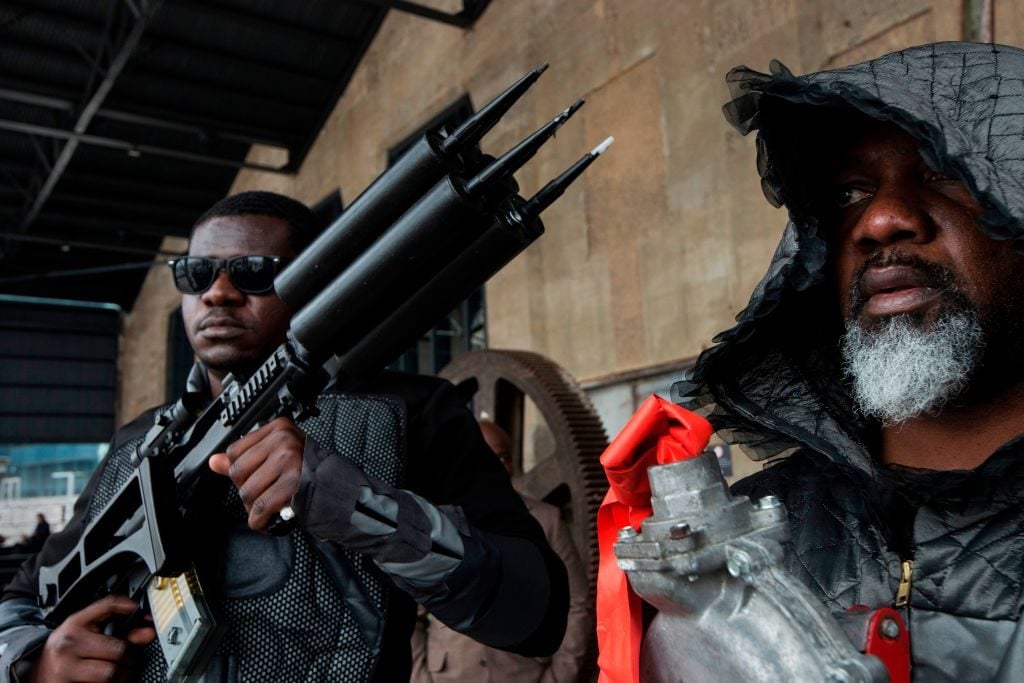
A lot of fanfare, and a lot of questions, surround the ambitious new institution.

Sara Roffino

One would be hard-pressed to find someone in Cape Town’s art world who doesn’t have strong feelings about the Zeitz Museum of Contemporary African Art (MOCAA), which officially opened its doors to the public last week.
Debates surround everything about the institution, from who it is intended to serve, to whose work will be on view, to its financial role within Cape Town and the V&A Waterfront district where it is located, to its relationship and responsibility to the rest of Africa. Before the first exhibition review was printed, Zeitz MOCAA managed to elicit a fury of feelings, opinions, complaints, and passionate discourse of a kind most museums will never see.
As the name of the new institution suggests, its founding collection is on a lifetime loan from German entrepreneur and former Puma CEO Jochen Zeitz. According to Zeitz himself, the controversy around the initiative is a good thing.
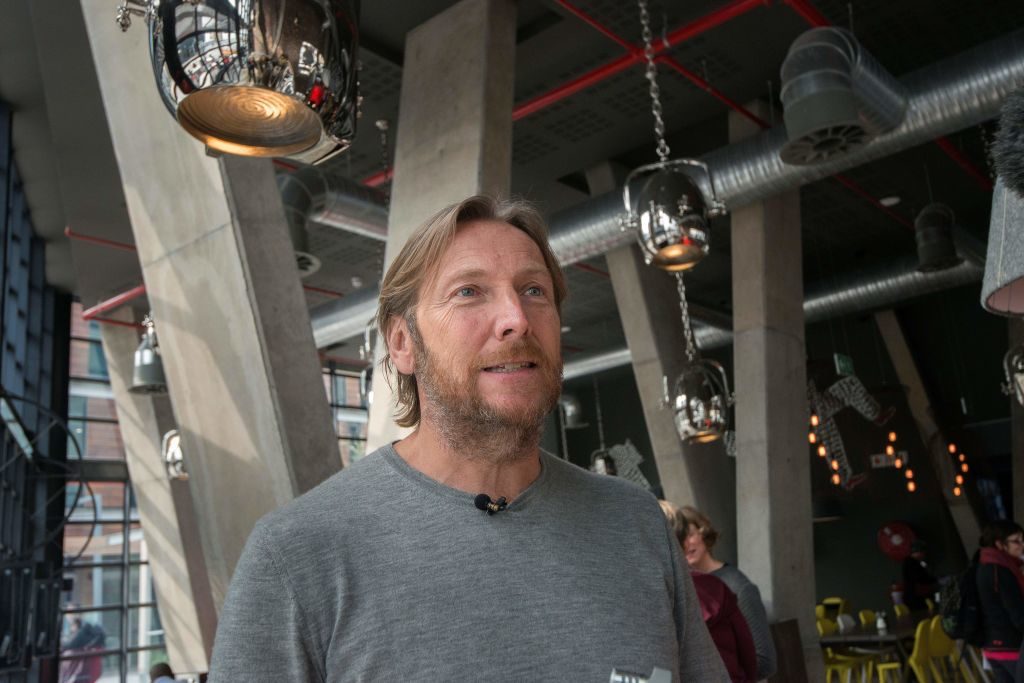
Patron of the Zeitz Museum of Contemporary African Art Jochen Zeitz speaks at the media opening of The Zeitz Museum of Contemporary African Art in Cape Town on September 15, 2017. Photo by Rodger Bosch/AFP/Getty Images.
“If people don’t have a critical viewpoint and aren’t talking about something, it’s irrelevant,” he says. “So the fact that people are talking about it—sometimes even without knowing enough to actually comment on it—shows that it’s a relevant institution already. From that point of view I look at this positively and think we are entering into a critical dialogue.”
The largest museum in the world dedicated to contemporary African art, Zeitz MOCAA is a glistening architectural feat, designed by British architect Thomas Heatherwick. Its 65,000 square feet of exhibition space are spread over nine floors in what was previously a series of grain silos. Classrooms, a performance space, a rooftop sculpture garden, and an onsite restaurant are now up and running, while the museum’s costume institute will launch later this year.
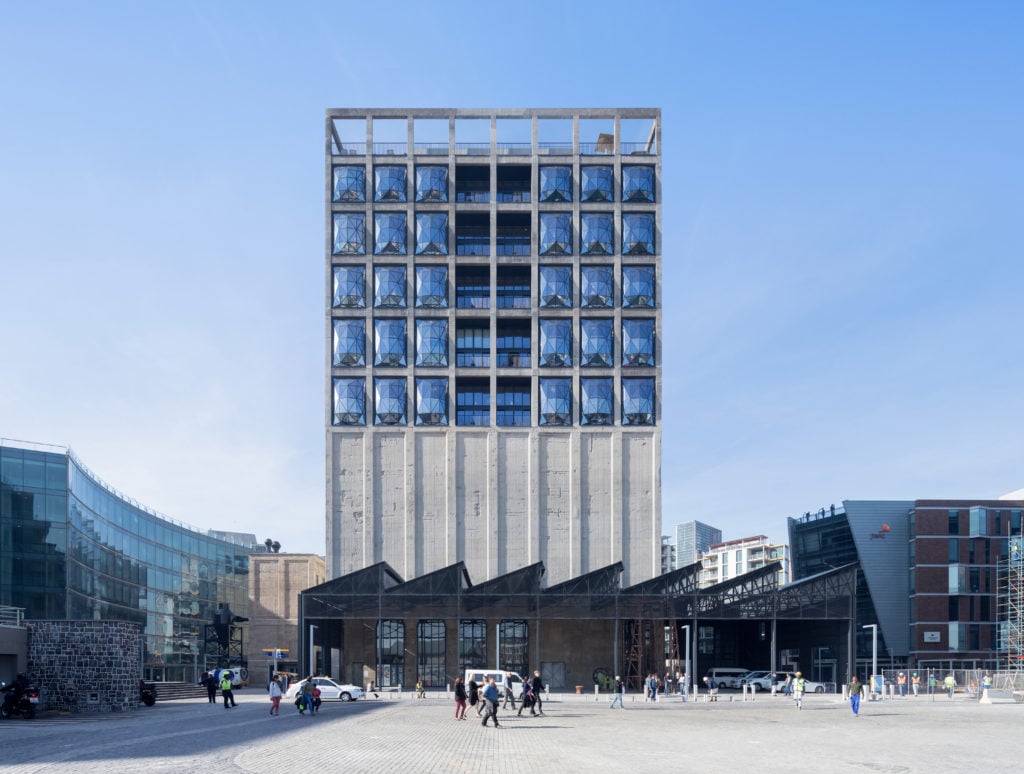
Zeitz MOCAA’s exterior at dusk, courtesy of Heatherwick Studio. Photo: Iwan Baan.
There are already more than 20 young people participating in a fully-funded year-long training program to bring young curators from throughout Africa to the museum.
Funded by Zeitz along with the V&A Waterfront—the corporation that since 1988 has been transforming Cape Town’s former harbor into what is now the most expensive real estate in Africa—with backing from GrowthPoint Properties and the Public Investment Corporation, the museum has been closely linked to capital since its inception. The V&A was planning a museum of some sort, and had even started working with Heatherwick before Zeitz and his collection entered the picture, but had no particular interest in, or knowledge of, the nuances of contemporary art.
“Growth Point and the V&A didn’t do the proper research or engage with the art world,” says Liza Essers, owner of the Johannesburg- and Cape Town-based Goodman Gallery. “They just did a deal, not really understanding how these things work globally.” Local galleries, curators, and artists found out about the museum at the same time as the wider public.
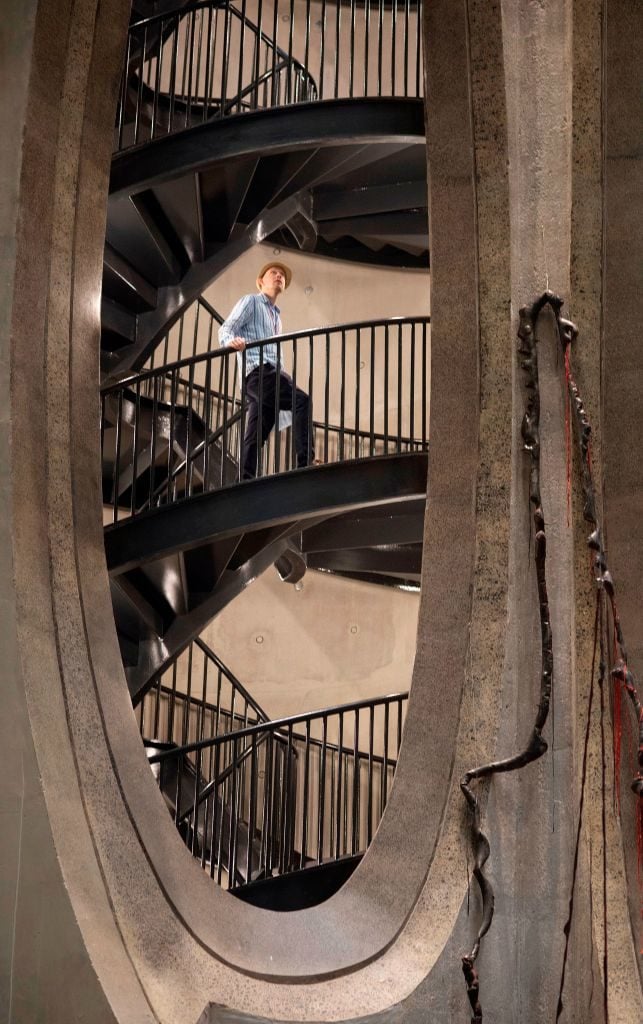
A visitor walks on a stairway in the Zeitz Museum of Contemporary African Art in Cape Town on September 15, 2017. Photo by Rodger Bosch /AFP/Getty Images.
The V&A Waterfront paid for the building’s $38-million redesign and will fund all exterior upkeep, with the museum responsible for the interior for the duration of Zeitz MOCAA’s 99-year lease on the building, at the rate of one South African rand (less than ten American cents) per year.
The relationship between real estate and art is nothing new—but the anxieties around it are tremendously heightened in the context of Cape Town, a city that, under Apartheid rule, was designed to keep black and white people separate.
With MOCAA tickets set at 180 rand ($14), the cost of admission is beyond the means of the majority of South Africans (though it is free on Wednesday mornings and public holidays and for those under 18 years old, and there is half-price admission on Friday afternoons). Understandably, it’s difficult for people to think of this glittering museum—atop which sits the $900-per-night (for a basic room in the off season) Silo Hotel—as a financial asset for the exclusive Waterfront.
Zeitz sees the fees as justified. “This is a completely privately funded museum and we also want people to contribute to this institution so it is sustainable and we can do that by having people pay for a ticket,” he said. “That’s a very normal thing in museums around the world. It’s an attraction and it has a value.”
Indeed, it is the first museum on the entire continent with the capacity and resources to present large-scale exhibitions that would otherwise not be on view in Africa. This private museum is therefore expected to fill the function that public institutions in the rest of the world have long filled.
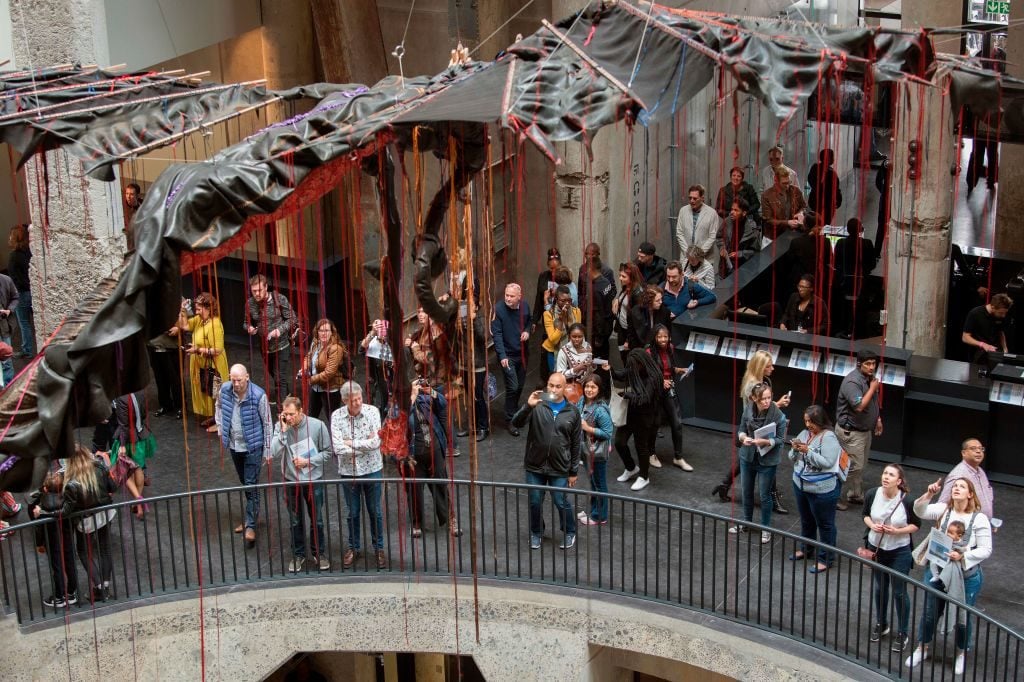
Visitors look at a sculpture by South African artist Nicholas Hlobo in the main hall of the Zeitz Museum of Contemporary African Art in Cape Town on September 22, 2017.
Photo courtesy Rodger Bosch/AFP/Getty Images.
Much has been made of the fact that the museum is helmed by white men—an obviously glaring issue in a country that is less than nine percent white (though the problem of racial inequality in the art world is far from unique to South Africa).
On a pre-opening walkthrough of the space, Mark Coetzee, director and chief curator of Zeitz MOCAA, explained that the ultimate goal is eventually to have the board reflect the racial demographics of South Africa. He also touted the museum’s democratic acquisitions process, in which all curatorial staff vote on all proposed works, thereby ensuring that no single voice outweighs the rest.
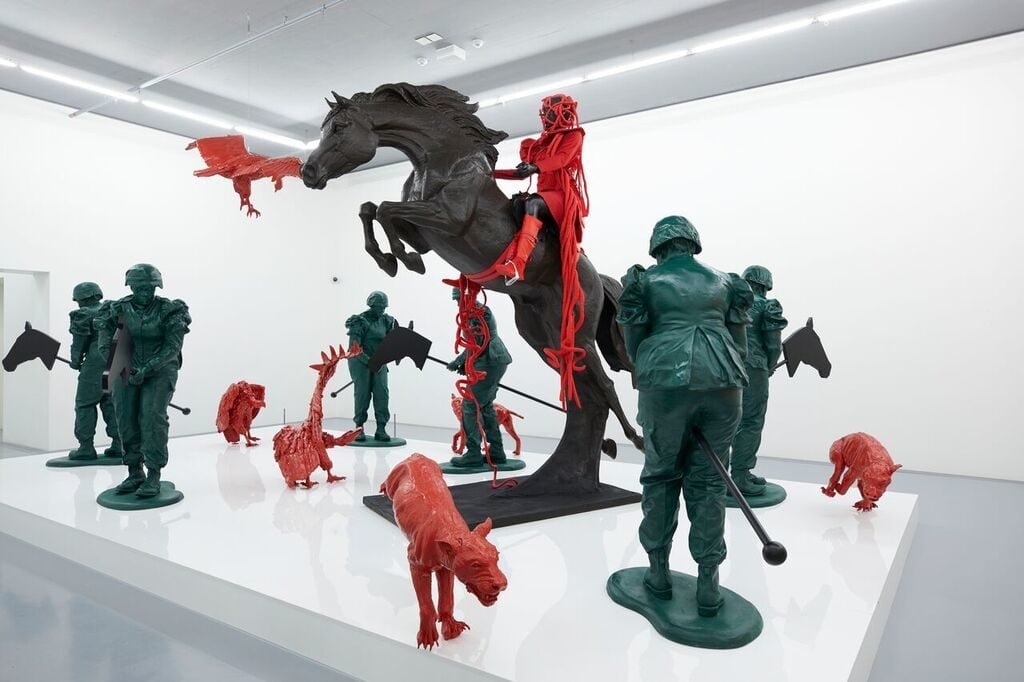
Mary Sibande’s In the midst of chaos, there is opportunity (2017). Courtesy of Zeitz MOCAA.
The balance between meeting the needs of Cape Town and the rest of Africa is also a challenge with which Coetzee must contend.
Osei Bonsu, a Ghanaian-British curator who is currently overseeing the “Satellite” exhibition at the Jeu de Paume in Paris, points out that relative to the rest of the continent, “the gallery system in South Africa has been quite well-structured to serve the community of collectors and commercial players working in the South African art scene.”
However, he continues, “it hasn’t always spread its tentacles into other regions of the continent, so we’ve ended up with a kind of asymmetrical system where South Africa represents everything that’s in development about the African continent, and other regions are left in the darkness. I think the museum is a great step forward for South Africa, but I would hazard seeing it as a continental triumph.”
Founding a museum is rarely a smooth affair. In the United States, when New York’s Studio Museum was first getting started in 1968, the founding group included white MoMA trustees as well as black artists and educators—and they faced extensive hostility and condemnation at the outset.
Artist Romare Bearden refused to join the board because he was skeptical of white interests; works were broken under uncertain circumstances at the opening exhibition; and the founding director resigned within two months. It took some time, but the museum found its stride and is now one of the most important cultural institutions in the United States.
![Mayor of Cape Town Patricia De Lille [third from right], former archbishop Desmond Tutu [center] and Premier of the Western Cape Province Helen Zille [third from left] prepare to cut ribbons at the grand public opening of the Zeitz Museum of Contemporary African Art in Cape Town on September 22, 2017. Photo by Rodger Bosch/AFP/Getty Images.](https://news.artnet.com/app/news-upload/2017/09/Zeitz-Ribbon-Cutting-1024x683.jpg)
Mayor of Cape Town Patricia De Lille [third from right], former archbishop Desmond Tutu [center] and Premier of the Western Cape Province Helen Zille [third from left] prepare to cut ribbons at the grand public opening of the Zeitz Museum of Contemporary African Art in Cape Town on September 22, 2017. Photo by Rodger Bosch/AFP/Getty Images.
Or, as Liza Essers, the Goodman Gallery owner, told me, “This is a real opportunity to shift the discourse and to insert other perspectives into a Eurocentric art history. There are definitely issues, there is no question about that. But I think at this point we have to be supportive and we have to stand behind the museum. It’s up to all of us to make it a success.”